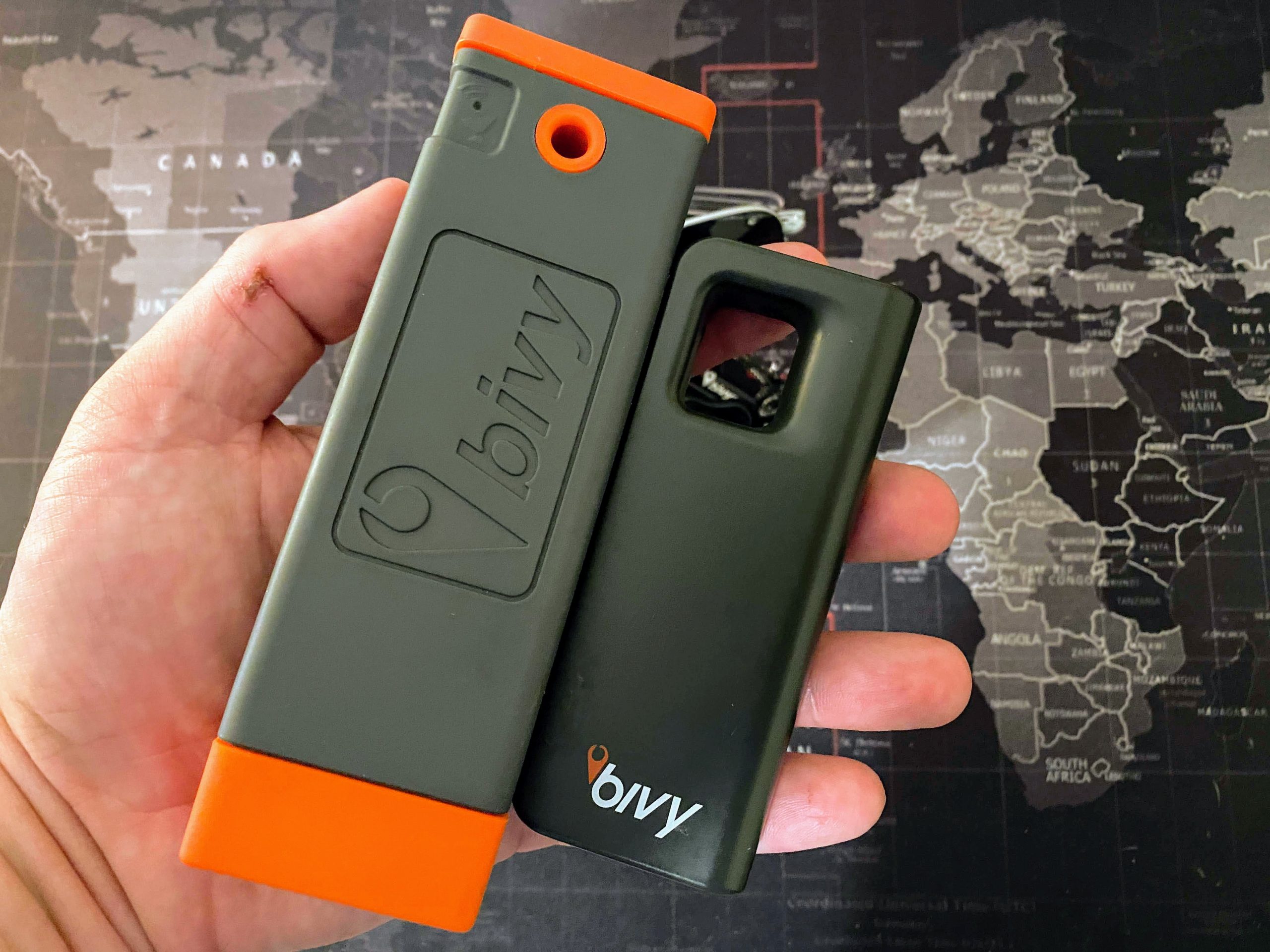Communication is one of the cornerstones of backcountry travel, as the ability to advise family and friends of our progress, call for assistance, or make an SOS during an emergency all helps provide us with confidence to travel further afield.


During my travels in Southern Africa, it was helpful to know that the Bivy was always available, including during moto repairs in Swaziland and solo exploration in South Africa.
While Bivy is one of the newest devices on the market, I have been testing their units for a few years, including their original V1 model that served as a tethered communicator and device charging brick. The concept was clever and robust, but it suffered from a fatal flaw: it required the phone to operate any function other than powering on/off. That meant if the phone suffered any damage or the traveler was separated from their phone, the unit would no longer function. A fall at speed from a motorcycle can easily crack a phone screen, etc. While I used the Bivy regularly during my travels in Europe, Africa, and the Americas, I always kept that concern in the back of my mind. Fortunately, the Bivy Stick V2 (Blue) addresses all of my concerns, and offers several industry firsts.



The app is feature-rich, but also somewhat buggy. Fortunately, any of the buggy screens can be cured by going back screens or restarting the app. The interface also changes notably from function to function, which reduces navigation efficiency. The three screen shots above help demonstrate this.
Here are the critical updates with V2:
1. It is half the size and weight of the previous unit at 95 grams.
2. All major communication functions can be performed without the phone, including SOS and checkin.
3. Charging is now USB-C (thank you)
4. Indicator light clearly communicate the unit status.
5. IP67 rating (1 meter for up to 30 minutes)
6. Iridium network ensures full global service (including the poles)
7. Easily clipped to a motorcycle jacket, bugout bag, or even a keychain

V1 of the Bivy is on the left, while the new V2 is on the right, and notably smaller, while also being significantly more useful.
The new Bivy is compelling for several reasons, principally its extremely small size and light weight. This makes it ideal for trekking, adventure motorcycling, bike packing, etc. The system of using message credits also make the cost of use reasonable, billing as low as $17 per month. I also noted how long the battery stayed charged, working months after initial charge. The improvements are significant, although I am planning more testing in the field with the V2 model once I can receive a production unit. More information and to preorder: bivy.com

Communicating back home with the V1 Bivy along the border with Zimbabwe. I was able to check in on the progress of COVID-19 travel restrictions and possible airline shutdowns even though I was completely off the grid.


